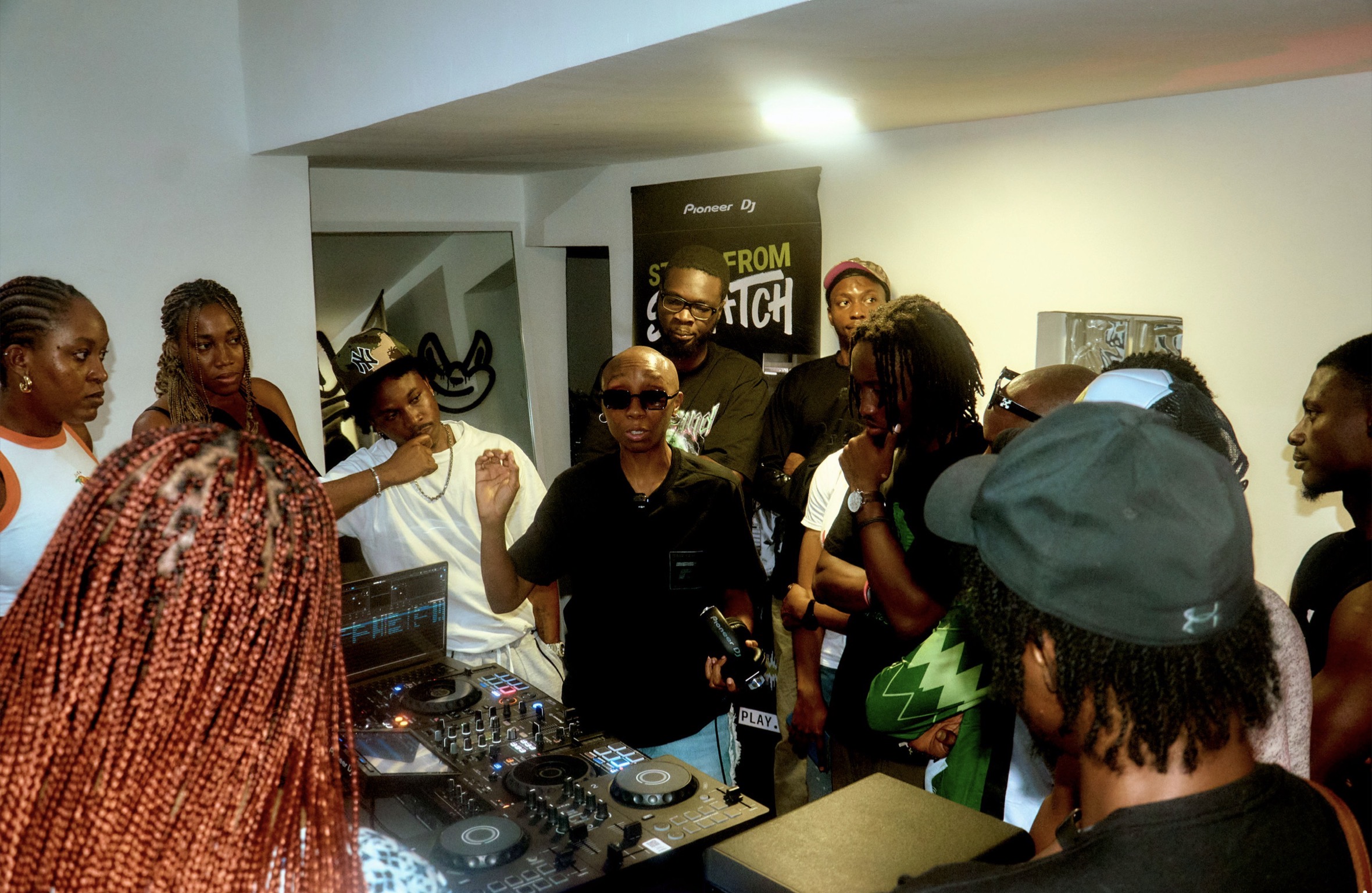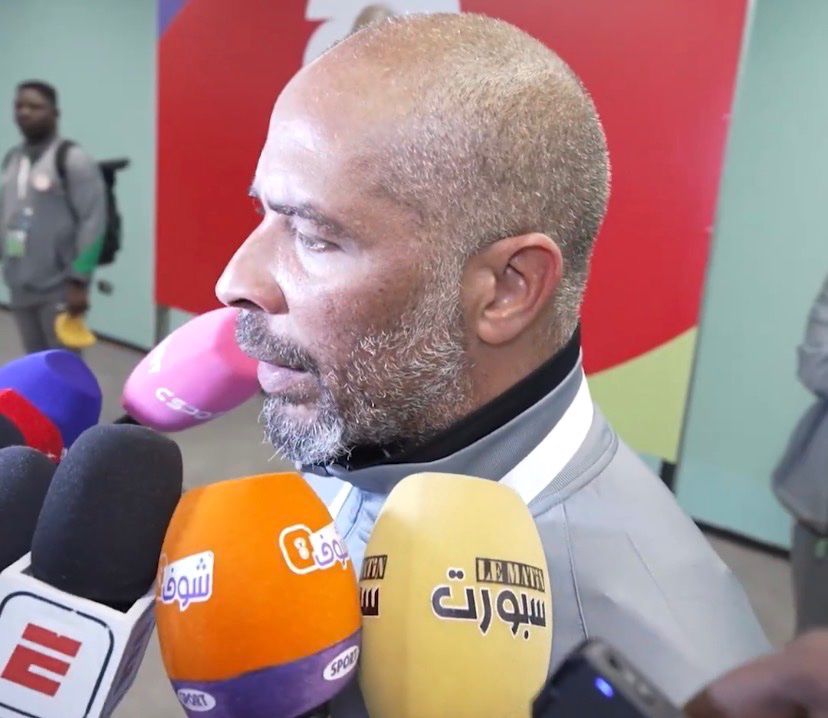by Akinwande Jordan
Kemi Adetiba has religiously watched The Godfather, Part One. If you are a gambling man, you can bet a million naira that Kemi Adetiba has a worn-out copy of the Mario Puzo novel on her nightstand. Annotated. Missing a page or two. Kemi Adetiba has seen Michael Mann’s HEAT. Kemi Adetiba is obsessed with the hydraulics of crime and mob bosses who spew ultimatums and wear rings that have tasted the odious saliva of desperate men.
To Kill a Monkey arrives with the weight of her and obsession. On paper, it’s another Netflix-backed series promising to prove Nollywood can sustain prestige television. It opens with a familiar premise: a man, a debt, a descent into the immoral circuitry of cybercrime. No gangland glamour, no crowd-pleasing monologues, just a slow suffocation of moral certainties. For two episodes, the promise holds. By the third, the tension slackens, the dialogue collapses under its own declarative weight, and what began as a taut exercise in dread starts to feel like a show retracing its own footprints and failing at it.
William Benson plays Efemini, a man pressed by circumstance into choices he barely recognises as his own. Benson’s performance is inward, precise; he finds something human in Efe’s faltering attempts to draw lines that keep eroding beneath his feet.
Opposite him, Bucci Franklin’s Oboz arrives with the Faustian bargain. Franklin’s Edo-laced cadence makes every utterance feel like a private joke at the audience’s expense, and for a while, that is enough. Bimbo Akintola and Stella Damasus circle the story with the experience of veterans, but their characters are underdeveloped, more vehicles for exposition than fully realized people.
The problem is not the premise. Plot has never been Adetiba’s Achilles’ heel. It is what the series does, or fails to do, with it. Adetiba has described the project as a “calculated risk,” a conscious retreat from the grand maximalism of King of Boys. Yet the retreat exposes the scaffolding and the charred bones of a story . The dialogue, which leans on a register of rehearsed gravitas, keeps telling us what is at stake rather than letting us feel it, indicating that Kemi Adetiba’s writing still holds some rhetorical bad habits.
Scenes linger, and not in the way of sustained tension, you can detect what should have been left in the cutting room. By the midpoint, the narrative momentum has all but evaporated. The sense of danger, so keenly felt in the opening episodes, evaporates into subplots and conversations that aspire to moral complexity but land as hollow pronouncements.
Adetiba’s technical ambition holds. The series knows how to frame despair: the oppressive geometry of low-lit apartments, roadside shrines awash in supernatural glow, an audio palette that occasionally hits a nerve. But craft can only disguise so much. Cinema, being a visual medium, cannot negate the crucial ingredients for sustained momentum.
A slow-burn thriller needs escalation; To Kill a Monkey slowly descends, its later episodes coasting on the residual energy of the first two. By the time the finale arrives, the show feels stranded, boxed in, and its most compelling questions about moral quandary and the calculus of desperation are posed too early and answered with half-baked responses.
There is a sense of something half-excavated in the writing, as if the characters’ moral ambiguities were conceived as signifiers rather than outgrowths of the drama. Oboz and Efe’s relationship, initially a study in unspoken threat, changes into repetitive exchanges about loyalty and betrayal. Characters circle the same moral grounds without deepening our understanding of their choices. The thematic ambiguity, pitched as a strength, starts to feel like narrative drift.
The supporting cast, though stacked with capable actors, struggles against dialogue that mistakes wordiness for weight. Akintola, a performer who can say more with a glance than most actors manage with a monologue, is repeatedly handed lines that flatten her presence.
Damasus fares no better; her character’s hinted complexities are drowned out by exposition. Performances are not weak; they are simply starved of writing that allows them to breathe.
For a series ostensibly about the brutal mathematics of survival, To Kill a Monkey rarely conjures the lived desperation that premise demands. Its moral quandaries are spoken, not felt; we hear of Efe’s stakes more than we are made to inhabit them.
Even the visual elegance starts to feel detached, an aestheticised misery that leaves little residue once the credits roll. Adetiba’s instinct to pare back spectacle is admirable, but the sparseness leaves no margin for error. When the words fail, nothing steps in to catch the fall.
Audience reactions have fractured along predictable lines. Some laud the show’s refusal to hand down moral verdicts, praising its ambiguous conclusion as a mark of maturity. Others voice frustration at the narrative’s drift, its descent into a holding pattern by the halfway mark. Both camps have a point. To Kill a Monkey begins as a story about moral corrosion, but its corrosion becomes structural, leaching urgency from the drama itself.
If anything, the series’ failure clarifies what made Adetiba’s earlier work in this genre so propulsive despite its many flaws . King of Boys thrived on excess, its operatic plotting and theatrical dialogue papered over stretches of thin character work. To Kill a Monkey, by contrast, strips away the protective layers. What is left is a framework of ideas that cannot sustain the weight of their own articulation. The dialogue, tasked with carrying the drama, falters under the weight of narrative duty.
Perhaps that is the real risk Adetiba ran: that in chasing austerity, she revealed the extent to which her storytelling has relied excessively on energy to shroud such brittle writing. The series aspires to slow-burn fatalism, but it burns itself out instead with its own subpar fuel.
By its conclusion, To Kill a Monkey leaves behind the outline of a sharper, more urgent series: one where moral ambiguity registers as lived complexity, not a talking point; where characters reveal themselves in action, not in dialogue that sounds imported from a pitch meeting. What we get instead is a show that begins with a bang and ends with a tumble on the circuit.





